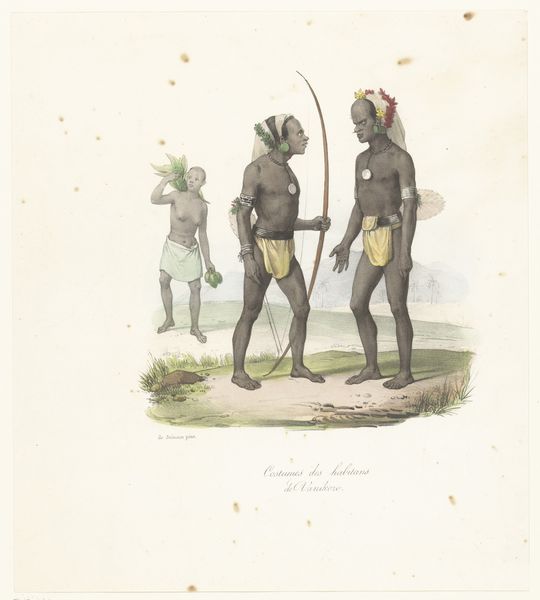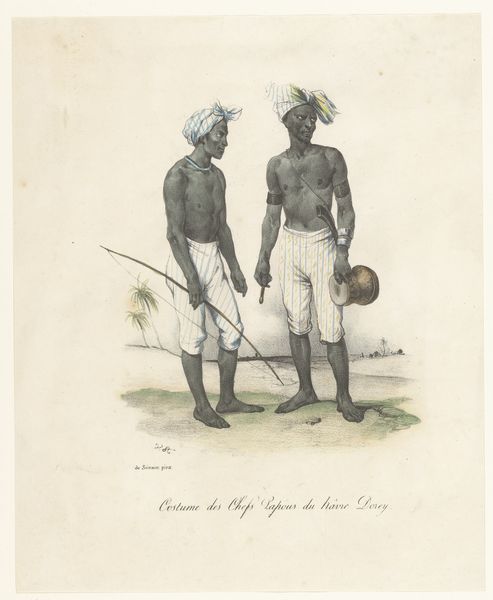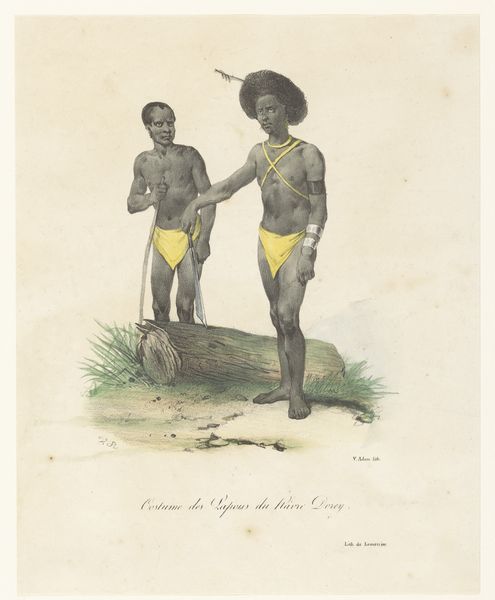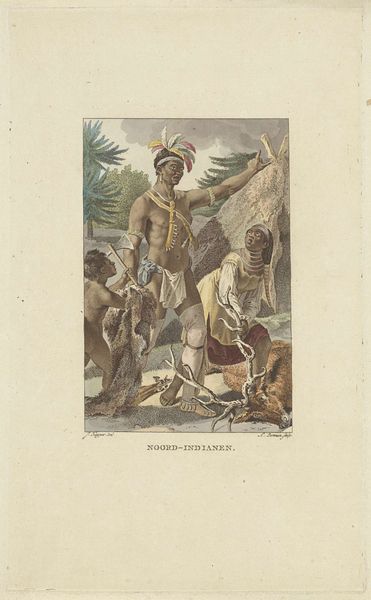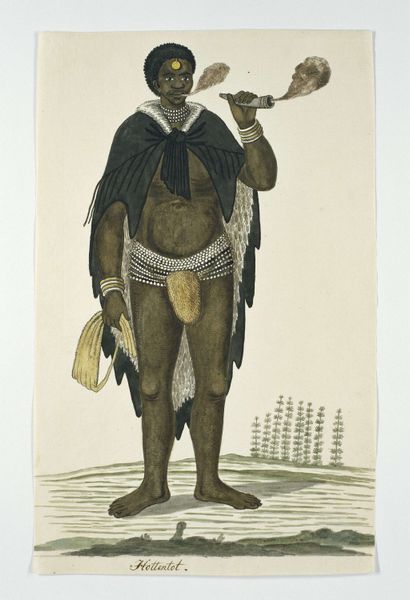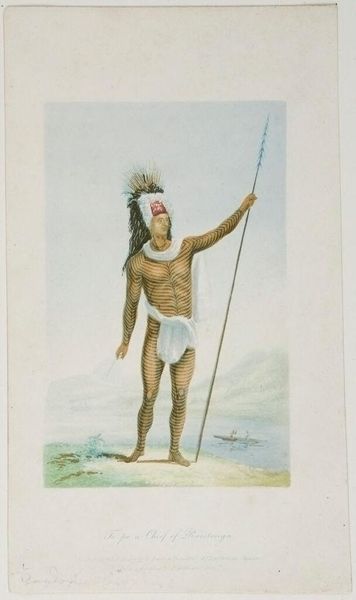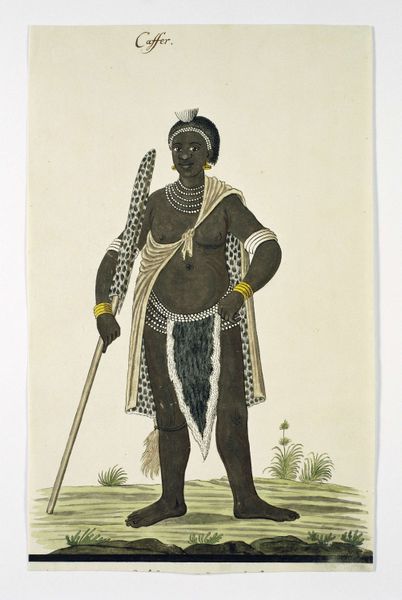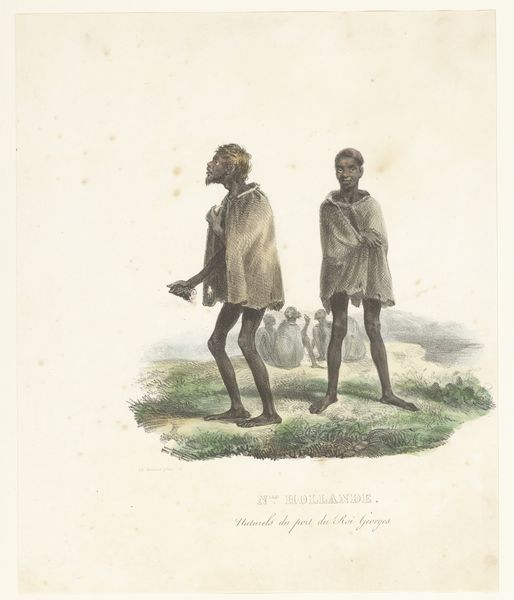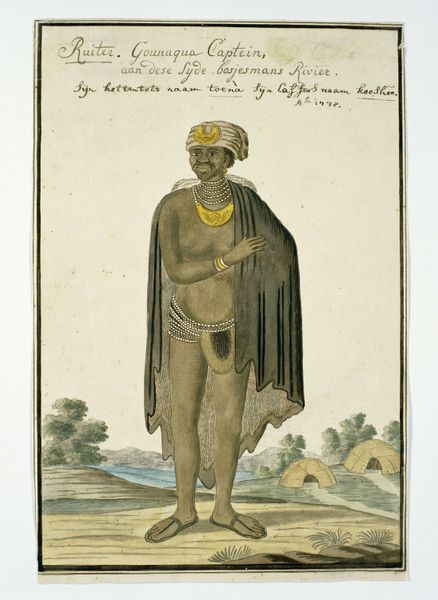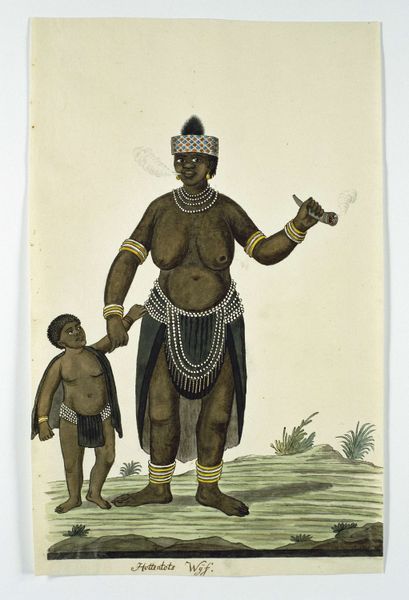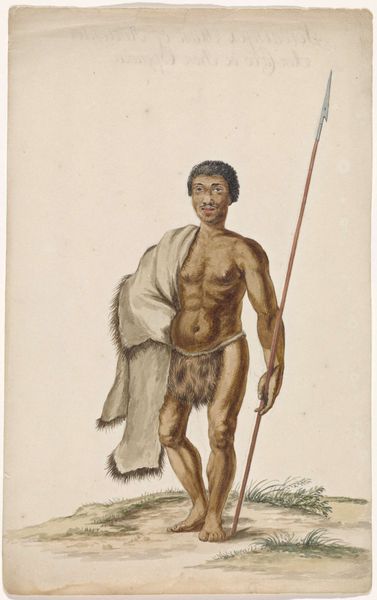
#
portrait
# print
#
watercolour illustration
Dimensions: height 222 mm, width 164 mm
Copyright: Rijks Museum: Open Domain
Curator: Welcome. Here we have "Kleding van de inwoners van Tikopia", or "Clothing of the inhabitants of Tikopia," a watercolor and print piece by Antoine Maurin, created between 1830 and 1835. Editor: Wow, look at this. My immediate reaction is how grounded it feels. I'm strangely calm and interested, despite the colonial context I am sure is embedded here. Curator: Indeed, Maurin gives us what appears to be a glimpse into the daily life and attire of the people of Tikopia, part of the Solomon Islands. As a genre painting, it also tells us about how Europeans viewed these cultures, emphasizing a specific exotic aesthetic. Editor: Absolutely. I am picking up on the details—the individual front and center looks directly out, a gentle invitation, maybe. The shell necklace seems weighty and precious; then there's the cloth, draped simplicity—all elements that feel studied. Yet it is far from a photograph; instead, it's infused with a sense of observation, filtered through artistic rendering. Curator: And what implications come to your mind, seeing as this was made at the dawn of increasing Western interventions? These ethnographic images circulated in Europe and beyond. Editor: Well, certainly, a lens is immediately cast over a community through someone else's perspective—power dynamics subtly dictating what aspects are worthy of representation. What details might the artist have chosen to emphasize? The lack of clothing and simple lifestyle become symbols of a simpler existence compared to European grandeur. Curator: Yes, these details reinforce or create perceptions. Note the composition also places the individuals, like specimens, almost as though under examination and far away on the island, detached and available to be analyzed and therefore, unfortunately, also to be conquered. Editor: Despite all, the artistry shines through: light dances over their skin, shadow plays through their pose. They have weight, life! As a human I can't help but see the intimate connections implied through family bonds and the gentle hands. A child touches the elders' cloth, implying deep rooted connection and history within this sacred place. Curator: By displaying this image here at the Rijksmuseum, we're faced with an imperative, as cultural custodians to continually unpack the histories inherent within such pieces and show transparency to the public. It reminds us of the complex interplay between observer and observed, culture and representation, particularly in art during this colonial time. Editor: And for me? It prompts that eternal artistic tug-of-war—balancing critical distance with that impulse to simply…look. To let the image work its subtle magic. What an invitation to reconsider it!
Comments
No comments
Be the first to comment and join the conversation on the ultimate creative platform.
